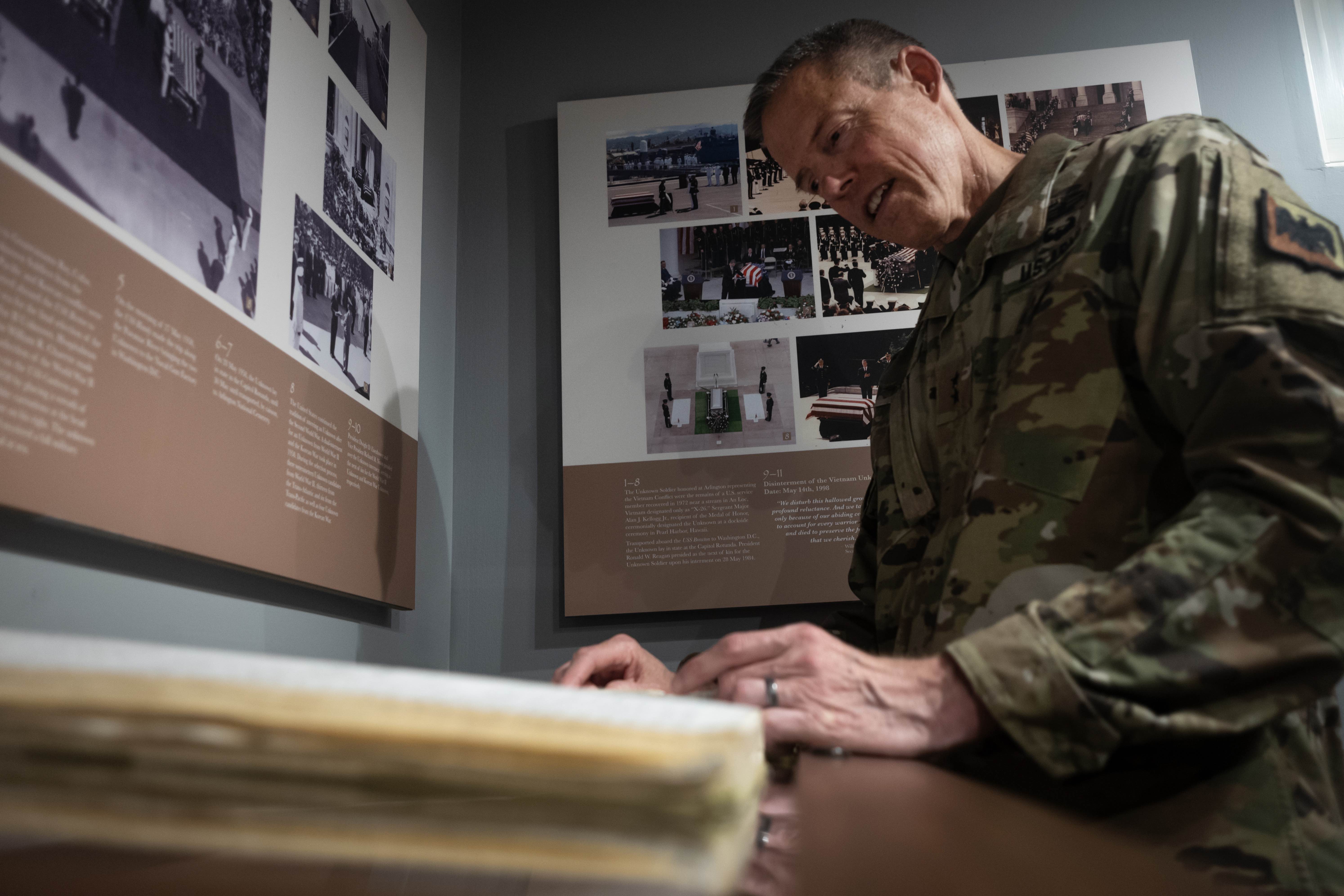An Army general’s final ‘walk’ at the Tomb of the Unknowns
Maj. Gen. William Zana, the only guard at the Tomb of the Unknown Soldier to reach the rank of general, took a final guard shift on the night he retired.Matt White
Posted on Nov 11, 2024 7:00 AM EST

Army photo by Elizabeth Fraser
At exactly 10 p.m. on the warm, last night of May, Maj. Gen. William Zana received his orders and began his final guard shift on the smooth marble stone plaza at the center of Arlington National Cemetery. In two hours it would be midnight, a new day and new month. A new guard would relieve him at his post, he would march off the plaza and suddenly, instantly, be a civilian.
But for the final two hours of his 37-year career, Zana wanted one last chance to stand a shift he had held as a young sergeant: keeping watch over the Tomb of the Unknown Soldier.
“I was Pvt. Zana when I showed up to the Old Guard,” Zana told Task & Purpose.“You know, all of us who raise our right hand and serve, there’s things that define you. First combat tour, first loss of personnel. For me, volunteering for and serving at the Tomb was absolutely both defining and shaping.”
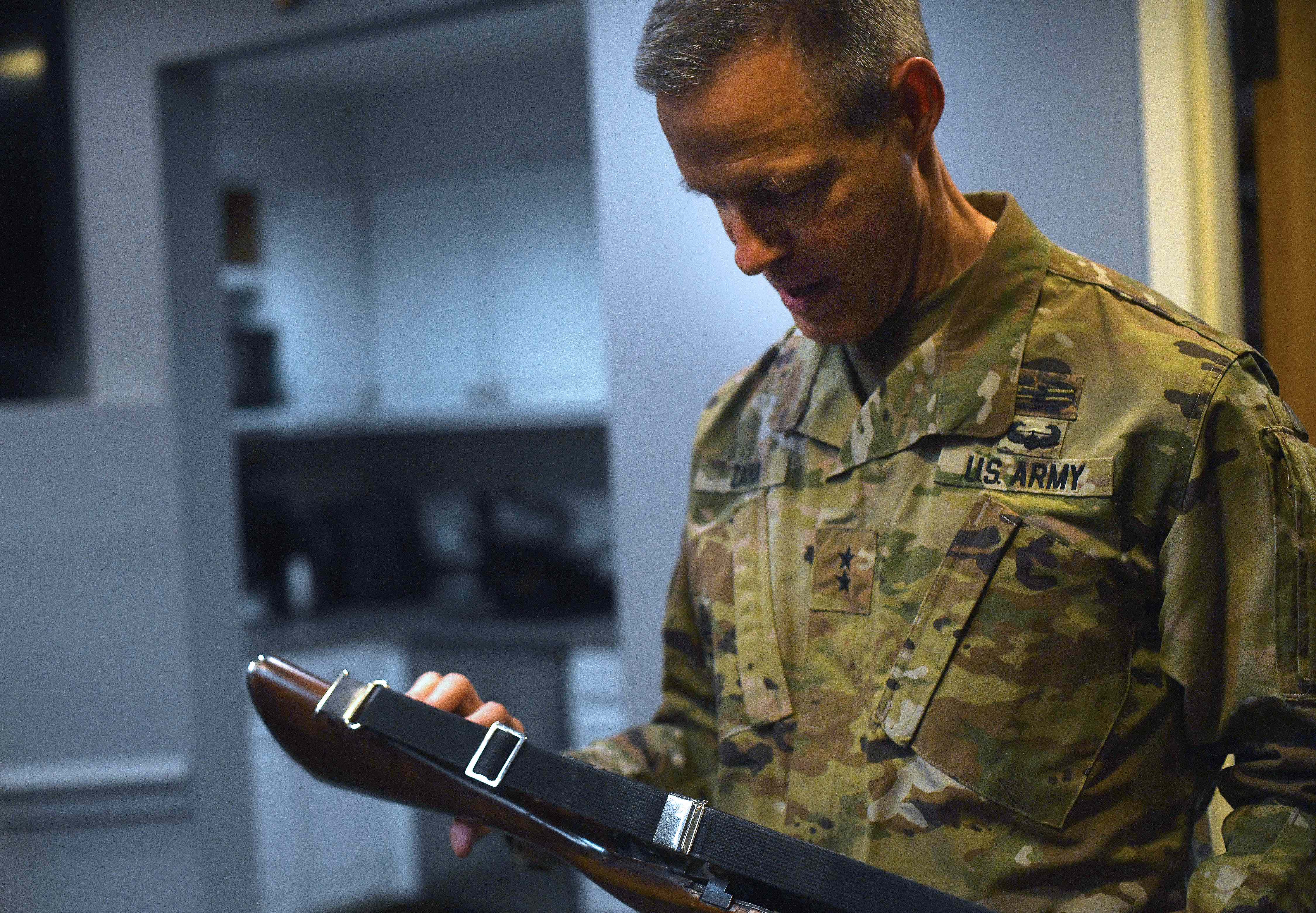
Army photo by Sgt. 1st Class Jon Soucy
In the early 1990s, Zana served for two years as a Sentinel, as fully qualified Tomb Guards are known, leaving in March 1991 for the Virginia National Guard. He earned a commission and over the next three decades led units in combat as an infantry officer and, later, led joint task forces as a general, including as the commander of Combined Joint Task Force-Horn of Africa in Djibouti. He retired as the National Guard Bureau’s director of strategic plans and policy and international affairs at the Pentagon.
In the 76-year history of the all-enlisted Tomb Guard corps, Zana is the only former guard to advance to the rank of a general officer.
But over his thee-plus decades of service, he returned to Arlington more than he thought he might, and more than he wanted. Over the years he buried his first wife, friends and fallen comrades in the cemetery.
“I’ve been on both ends,” Zana said. “I’ve been on the end with a casket in the back of a Humvee in a forward operating base in some remote location in Afghanistan, and I’ve been there with, you know, the caissons pulling up with the flag-draped coffin.”
Throughout his career, his time as a Tomb Guard was at the core of service.
“As I started approaching retirement, there was this idea of getting in one last shift at the Tomb,” Zana said. “It was important because I wanted to be able to pay my respects and say thanks to the Unknowns for their sacrifice and for their inspiration.”
‘Rows and rows’
Zana grew up in a military family, his father serving in the Air Force and with relatives in each of the other armed forces. He lived in Belgium for seven years, absorbing the history of two world wars and even older conflicts fought on its soil.“I played on the battlefields of Waterloo,” the site of the English Army’s final victory over Napolean, he said. “That really spoke to me as a kid.”
Returning to the U.S., he went to college but left after three years to join the Army.
“I realized, if I didn’t go do this, you know, I didn’t know if was it gonna happen.”
He signed up for the infantry and arrived at boot camp at Fort Benning, Georgia, with a contract for Airborne training and the 75th Ranger Regiment. But when recruiters from Arlington’s 3rd Infantry Regiment — The Old Guard — visited his basic training class, he was hooked.
”I didn’t know anything about the Old Guard,” Zana said. “But there was just a different set of opportunities. […] It was something that was connected to honoring veterans, dignitary ceremonies, funerals within the cemetery, there was something about that that just seemed like a meaningful opportunity.”
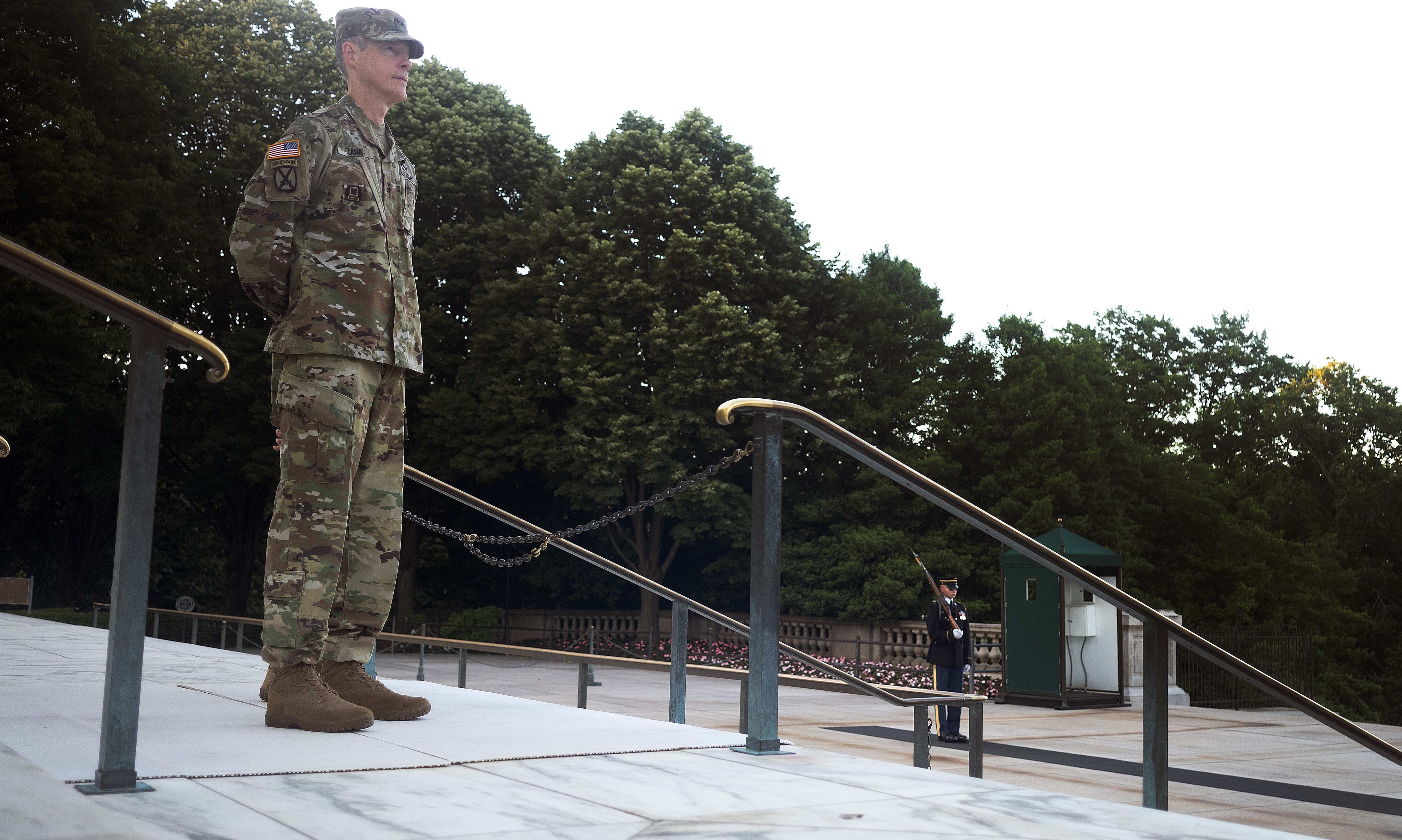
Army photo by Sgt. 1st Class Jon Soucy
Zana changed his dream sheet and was soon at Fort Myer, adjacent to Arlington National Cemetery. Known as the Old Guard for its status as the oldest continually active infantry unit in the Army, the 3rd Infantry Regiment’s soldiers perform all ceremonial duties in Arlington, along with maintaining currencies and training as front-line infantry soldiers. Old Guard soldiers perform as firing parties and casket attendants at 25 to 30 burials every day, escort VIPs and participate in wreath-laying ceremonies. As a newcomer, Zana shuffled through those duties, learning the history of the cemetery, its rituals and its place in the American military as the foremost resting ground for war dead.
“Arlington Cemetery is a place that just moves you,” Zana said. “It can be overwhelming to be surrounded by rows and rows of headstones. I think for many people, it’s easy to depersonalize that.”
But the Tomb of the Unknown, Zana found, boils the scope and size of Arlington down to a single grave. “When you go to the Tomb of the Unknowns, it’s kind of the epicenter, it’s the representation of so much that’s within the cemetery.”
‘Known but to God‘
The Tomb of the Unknown Soldier is a white marble crypt that holds the remains of an unidentified American killed in World War I. Engraved on the crypt are the words: “Here rests in honored glory an American Soldier known but to God.”The unidentified remains of two other American service members are buried in front of the tomb, one from World War II, one from the Korean conflict. A third grave where an Unknown from Vietnam was laid to rest is now empty, after the remains were identified in 1998 by DNA testing as Air Force 1st Lt. Michael Blassie. An A-37 Dragonfly pilot with the 8th Special Operations Squadron, Blassie was shot down near An Lộc, Vietnam in May 1972. His body was exhumed and reburied near St. Louis.
Tomb Guards stand guard at the Tomb 24 hours a day, 7 days a week.
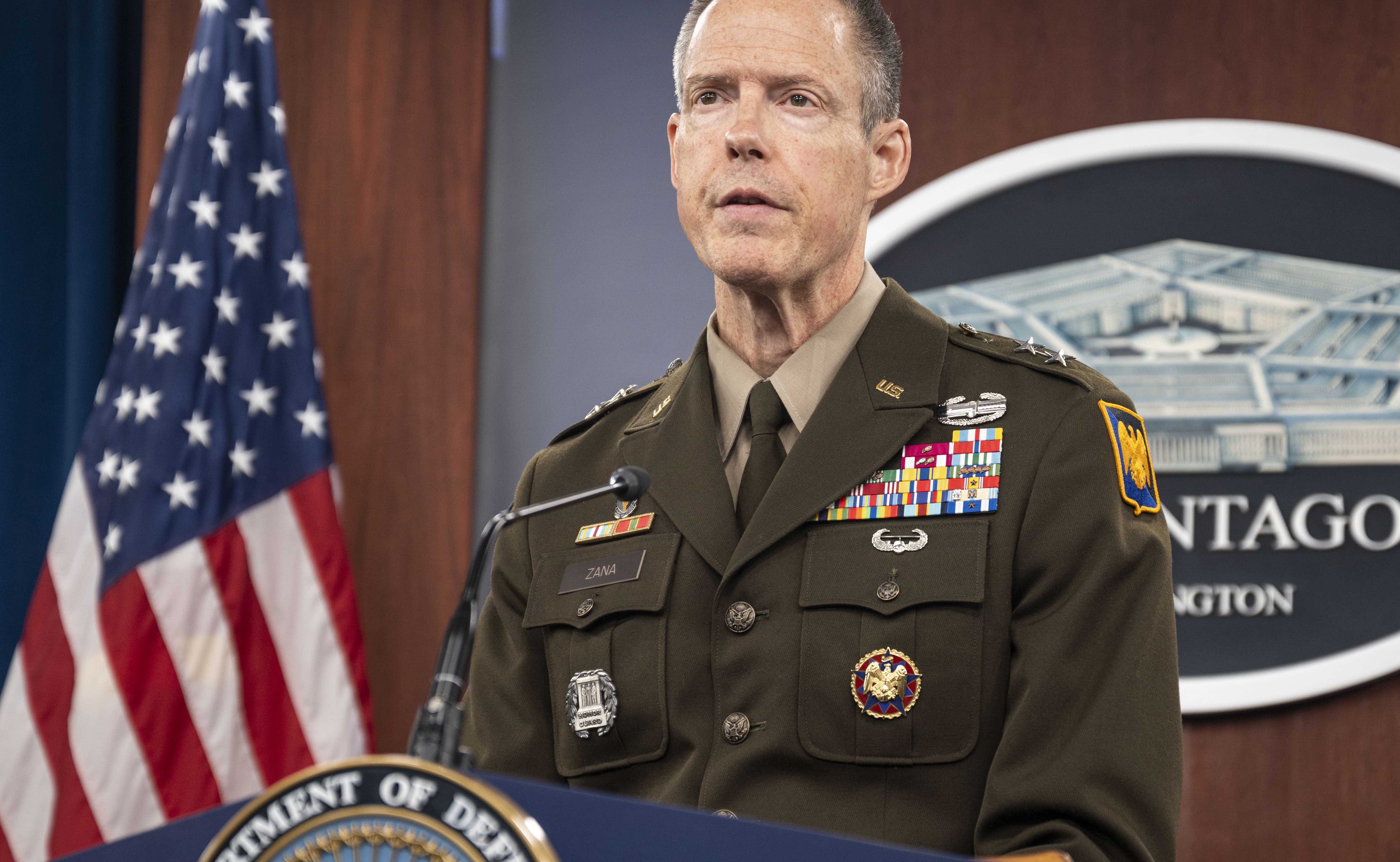
DOD photo by MC1 Alexander Kubitza
The role is the most public and most selective position in the Old Guard. In the 76 years of the tomb, just 731 soldiers have earned full status as guards, earning the title of Sentinel and the right to wear a Guard, Tomb of the Unknown Soldier Identification badge for the rest of their careers. The two newest Sentinels were awarded their badges on Monday during Veterans Day.
During Zana’s first two years with the Old Guard, the more Zana learned about Tomb Guard duty, the more he wanted to be a part of it.
“My first platoon sergeant went down to be the sergeant of the guard,” Zana said. “He reached out and asked me ‘Was I still interested in trying out?’ I said, ‘Yeah, absolutely.’”
Qualifying for duty as a Tomb Guard remains largely unchanged from the process Zana went through in 1989. The first cut-off is genetic — men must be between 5-foot-10 and 6–foot-4, while women must be 5-foot-8 and 6-foot-2. Volunteers must be in “superb physical condition” with an “unblemished military record.”
After an interview, Zana was given a two-week trial period, by the end of which he had to repeat back seven pages of Cemetery history verbatim.
That earned him a “walk.”
21 Steps
The “walk” is at the heart of Tomb Guard duty. During each Sentinel shift — known as a relief — six guards rotate through the duties of a walk. On the plaza in front of the Tomb, the on-duty guard walks a 21-step path at 90 steps per minute, then faces East for 21 seconds — both counts symbolic of a 21-gun salute. They reverse and perform a shoulder-arms movement to place their weapon, an immaculate M-14, on the shoulder facing the Tomb’s amphitheater, where the public gathers to watch, signifying that the guard stands between the Tomb and any threat.During the countless hours Sentinels walk at the Tomb, they watch thousands of visitors.
“You realize that the Tomb of the Unknowns means something different to everyone who visits,” Zana said. “Some people look at it as this is representative of somebody they lost or [a] family member. It could be that it’s a relative they never knew.”
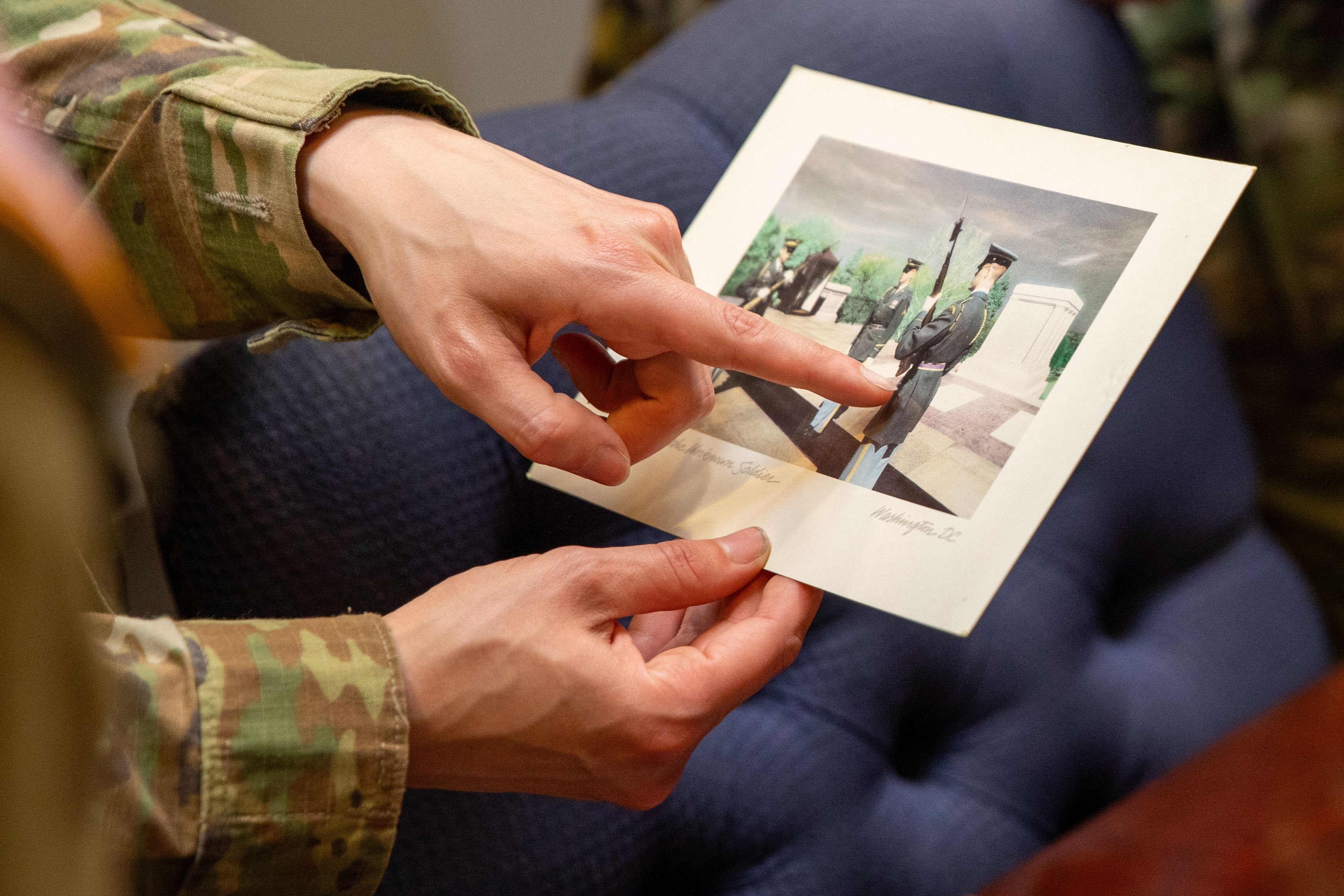
Army photo by Sgt. Ethan Scofield
During his time as a Sentinel, Zana knew Arlington for the generations of America’s military dead buried there. As a Sentinel, he even had to memorize the details of 300 notable graves mixed among the thousands of others. But none held anyone he had known in life.
When he retired as a two-star general, that was no longer true. It was now a cemetery full of friends, family and comrades.
“It was very, very different when I was was first down there. I hadn’t lost any service members in combat.”
‘Your name on a headstone’
Zana’s first funeral duty for a fellow soldier came while still at the Old Guard, when the unit laid to rest the stillborn child of a team leader.“At that time, I was a private or specialist,” Zana said. “Burying the child of someone who you’re working for, having a child-size casket, the firing party and the casket bearers, you know, you just cry.”
In the years since, Zana has been back many times.
“The most recent I went to was for a naval officer who served with me in Djibouti,” Zana said. “And over the years. I probably had two or three dozen people who I’ve known well who were buried in the cemetery and far more that I knew tangentially.”
In June 2006, Zana deployed to Afghanistan to lead a National Guard liaison unit under the 10th Mountain Division at Bagram, Afghanistan, a job with constant travel around the war zone.
A week after arriving, on his first patrol, his team’s vehicle was struck by a vehicle-borne IED, armed with four artillery shells. Only one exploded.
“We all walked away,” Zana said. “One of the EOD guys came up to us and wanted to shake our hands. He said ‘you’re the luckiest guys in all Afghanistan.’ I didn’t think so, it was my first week, but it was a realization that I am truly responsible for the lives and well-being of others, while still accomplishing the mission.”
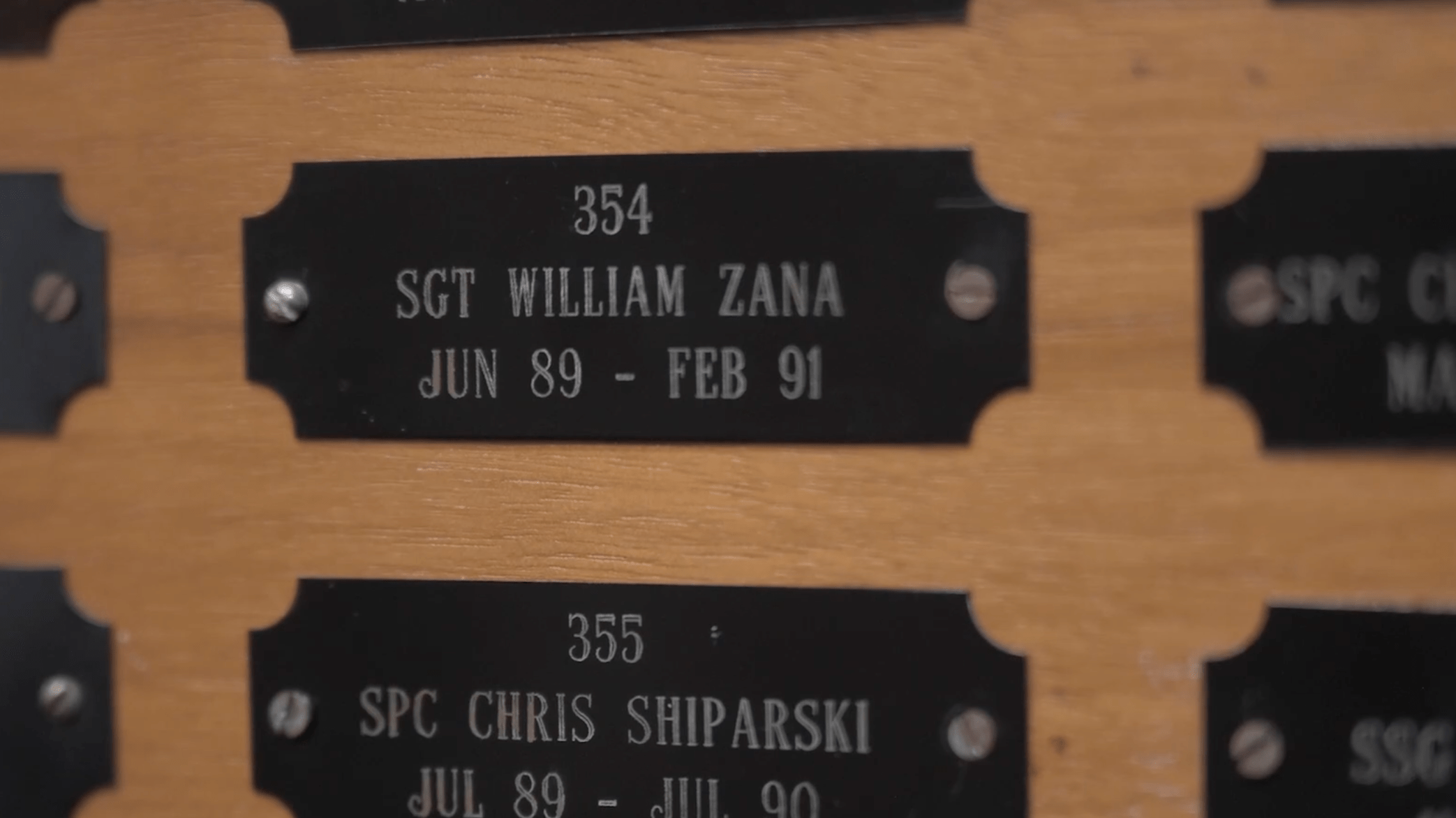
US Army video still.
Soon after, the unit would run out of that luck.
During Zana’s command, a Maryland Guardsman, Command Sgt. Major Roger Haller, joined his team. Zana rotated out of the job in January 2007, replaced by Lt. Col. David Canegata, an officer in the Virgin Islands Army Guard who was, like Zana, assigned to the National Guard Bureau headquarters in Virginia. The team’s counterpart in Iraq was another of Zana’s close friends, National Guard Col. Paul Kelly.
On Jan. 20, 2007, the same month Zana turned over command, Canegata, Haller and Kelly were on a Blackhawk that was shot down in Iraq, killing all 12 soldiers on board. Of the dead, 10 were National Guard members. It was the deadliest single loss for the Guard of the post-9/11 wars.
Canegata’s remains were eventually returned to the Virgin Islands and Haller’s to Maryland. Kelly is interred at Arlington, as is a monument dedicated to those killed in the crash. The monument includes comingled remains removed but not identified from the crash.
“It connects back when you realize you’re doing a fallen comrade ceremony for people who, you know, are going to go back and be interred at Arlington Cemetery,” Zana said. “It’s connecting the dots between what those things are. There’s 400,000 people buried in Arlington and you realize they’re all individuals with these full and profound stories and family members and connections and communities. And the Unknowns are the ones who not only lost their lives but they also gave their identity. That’s the important thread that connects it all together.”
Just a year before his Afghanistan deployment, Zana’s first wife, Rebecca Zana, died of brain cancer. Her internment at Arlington put Zana at the center of a ceremony he knew well. With the Old Guard, Zana performed hundreds of burials as a casket bearer or firing party, his presence and professionalism, he believed, a comfort to families of the dead.
“I was there with the spouses, the widows and the widowers, the family,” Zana said. “The headstone says ‘Rebecca Zana, wife of Major William Zana, and having your own name on a headstone on a grave in the cemetery and having been the spouse for the ceremony that I once did, I don’t think [there are] adequate words that I could give.”





